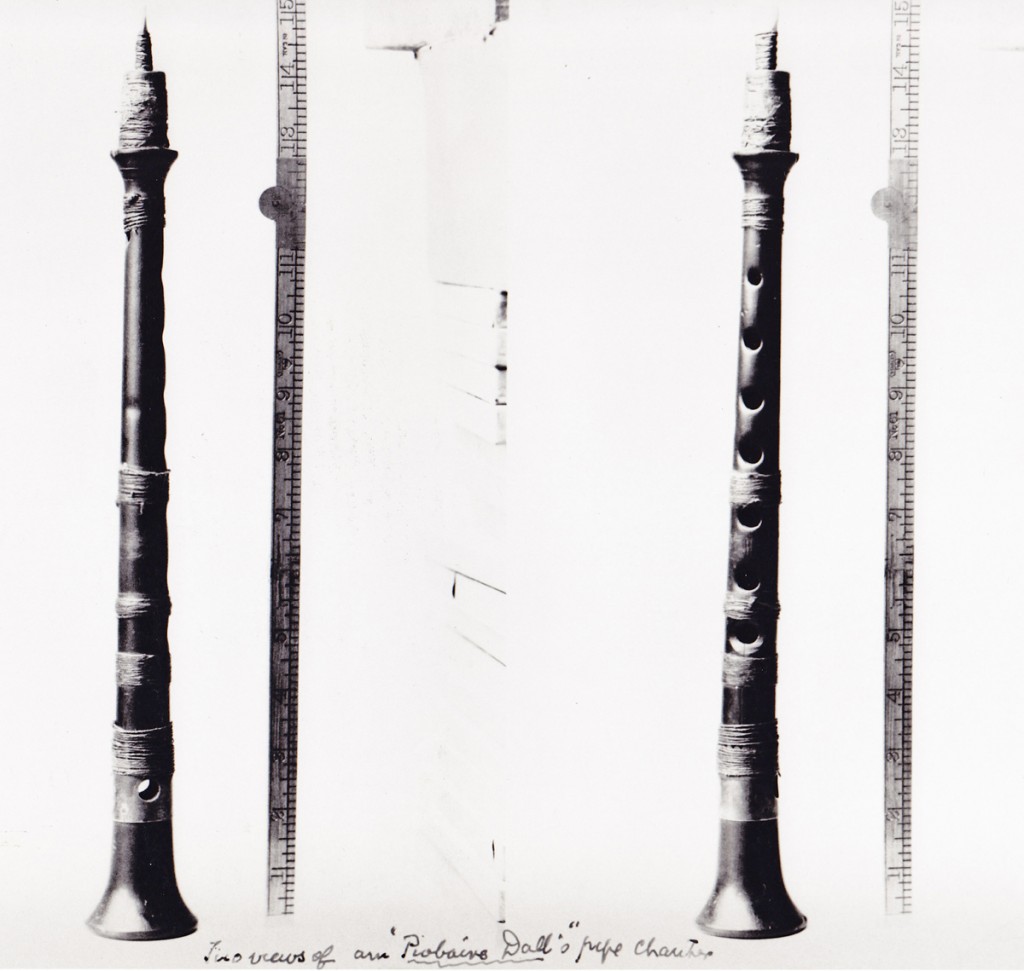Sionnsair Iain Dhoill, pìobaire Gheàrrloch
The Blind Piper of Gairloch’s [Pipe] Chanter
By John G. Gibson
The oldest Highland bagpipe chanter in existence came ashore in colonial Nova Scotia, in the possession, we assume, of Iain Ruadh MacAoidh (mac Aonghais, ’ic Iain Dhoill, ’ic Ruairidh, ‘’ic Dhòmhnuill no Iain) in 1805. To date it is not possible to say that Iain Ruadh, the immigrant and last piper to the MacKenzies of Gairloch (from c.1775-1805, we assume), brought it as part of a playable set of bagpipes; drones are relatively simple to make compared to chanters.
No other parts of the complete set or sets have yet been identifiable as having any association with it, in Old or New Scotland, made of any kind of wood. How many drones Red John played, not to speculate about the Blind Piper or any other MacKay in the line, is unknown.
It is presumed that the Blind Piper passed the chanter to his son Angus and that in turn it was given to Red John. Red John had been anxious to get his family out of Wester Ross in 1805, through gathering threats of future impoverishment and loss of old Gaelic status. No-one has yet associated the chanter with Iain Dall’s father Rory MacKay, or Rory’s brother Donald Mor. All that is known is that it is made of one of the hardest and most durable woods known, Guaiacum (aka lignum vitae), a tropical and sub-tropical genus first found by Europeans in the areas of modern Guyana and in the West Indies.
This wood appears to have been first used by Spanish Catholic colonist-profiteers in the West Indies in the late 15th century. That durability probably played some part in the chanter’s long life. So too probably did an appreciative understanding of its value as one-time possession of a cultural luminary such as the Blind Piper.
It is not implausible to suggest that Rory MacKay’s father, Lord Reay, may have had it made for himself, or bought it. That Rory was an illegitimate son of a Lord Reay, or was married to an illegitimate daughter, is known through Nova Scotian written family history.
Who made the chanter is unknown. No-one knows where or when it was made either. While Gairloch, on the west coast of Scotland, enjoyed at various times a relatively benign, frost-free micro-climate, it was never sufficient to allow any claim that the tree was ever grown there.
Apart from the last three Sinclair generations of owners of the chanter in the New World, the path it took to them is not certain. First, one of the chanter’s recent owners, colonel John Sinclair, thought that both of Red John’s sons, Angus (d. 1868) and John MacKay (d.1884) had been trained in piping when the family emigrated. Angus, who was an adult emigrating, kept up piping and taught a few neighbours while John, later known as Squire John MacKay JP, didn’t.
It appears likely that one or both of them held the chanter. If the Squire took possession he gave no hint of the fact to Alexander MacKenzie, who sought him out and interviewed him in c.1867. The Squire’s son Norman had a daughter Norma, who married Donald Sinclair, and the instrument appears to have moved to Donald Sinclair (a rich benefactor of the Aberdeen hospital in New Glasgow who died in 1962).
A grandson of Donald gave the chanter to the museum of piping in Cowcaddens in November 2010, later stating that he had not felt confidence enough to bequeath it to a Nova Scotian or Canadian institution.
John G. Gibson, a scholar of Gaelic culture and music who lives in Judique, Nova Scotia, is the author of “Traditional Gaelic Bagpiping, 1745-1945” and “Old and New World Highland Bagpiping,” both published by McGill-Queen’s University Press.
Editor’s Note: The transfer of the Iain Dall chanter to Scotland late last year was a controversial and upsetting event for many in Nova Scotia and beyond. Barry Shears, who obtained this article from Mr. Gibson, explains in his book “Dance to the Piper, The Highland Bagpipe in Nova Scotia,” that the photograph used in this article was taken by Nova Scotian Piper Fred Calder in 1934. Mr Calder sent it to the Secretary of the Piobaireachd Society in Scotland, and it was soon revealed to the piping world via publication in the Oban Times, Additional information about this chanter can be found on pipe maker Julian Goodacre’s web site.

Have any attempts to restore the chanter to Nova Scotia been made, and if so, what have been the results? Very interesting article, John.
Pingback: Pipes & Pipers: The MacLennans and a Nova Scotia Connection | Alternative Pipers of North America